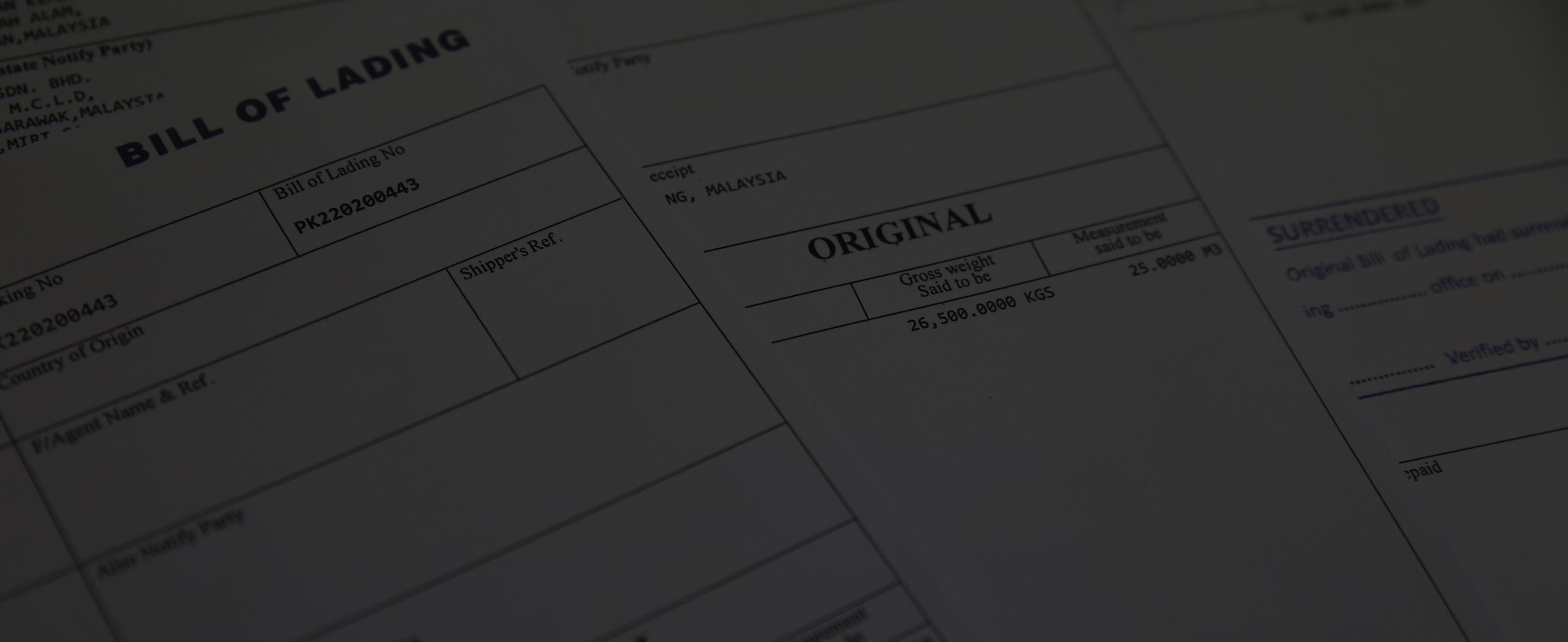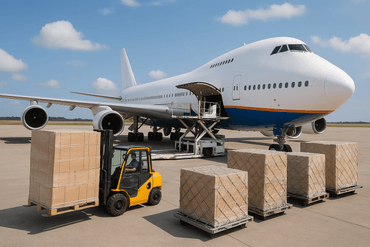
Switch Bill of Lading: A complete manual and word of advice



In an increasingly globalized world with segmented economies, shipping agents find themselves dealing with more trading companies and their foreign-to-foreign transactions than the old-fashioned factory-to-importer shipments.
The success of such contracts typically hinges on the ability of trading agents to conceal the factory’s contact from the end buyer through the issuance of a switch Bill of Lading.
What is a switch Bill of Lading?
A switch Bill of Lading refers to a second set of Bill of Lading issued by the carrier (or its agent) to substitute the original bills of lading issued at the time of shipment.
Even though it technically deals with the same cargo, the information on the switch B/Ls, for various reasons put forth below, is intentionally edited and is not meant to be identical to the original B/L it replaces.
Just like the original, the switch B/L serves as:
- A receipt for goods (for the destination agent)
- Evidence of contract of carriage (contract between shipper and the carrier)
- Document of title to the goods (consignee will need at least one original to receive the goods)
In most cases, a switch B/L is used in order to edit the shipper information, i.e. replacing the actual factory details with the trading agent’s. That said, there may be various other motives for requesting a switch B/L.
Reasons to issue a switch Bill of Lading
Switch B/Ls are only issued against the surrender of the original set and may be required by any of the three parties with direct involvement in the purchase/sale of the cargo: the cargo owner/seller (or an authorized representative), the trading agent, and the end buyer.
The reasons for requiring a switch B/L include:
- The seller (who could be a trading agent) wants to hide the name of the actual exporter from the consignee to prevent the consignee from striking a deal with the exporter directly.
- The seller does not want the buyer to know the actual country of origin of the cargo.
- The original B/L may be held up in the country of shipment, or the ship may arrive at the discharge port prior to the original B/Ls.
- The trading agent prefers to ease his cash flow by first receiving payment from the end receiver before paying the shipper.
- Goods may have been resold en route as a high sea sale and the discharge port must now be changed to another port.
- Customs at destination or consignee request for the cargo description to be edited. Eg. “tools” instead of “gardening tools”.
- The goods were originally shipped in small parcels on separate B/Ls and the buyer prefers to have only one B/L covering all the parcels to facilitate his on-sale. Or vice versa - one B/L was issued for a bulk shipment which the buyer prefers to split into multiple B/Ls covering smaller parcels.
Switch Bill of Lading procedure
The Switch B/L can only be officially requested by the cargo owner or principal. In other words, since the Bill of Lading represents ownership, only the company holding the full set of documents can request for a switch B/L.
Advice: the request should only be made if the company has all three original B/Ls in hand, except in the case of a Telex Release.
After the request has been made, the switch bill must be approved by the carrier and the freight forwarder, who needs to very meticulously compare the differences between the original B/L and the new and proposed Switch B/L to make sure everything that needs to match, matches.
Note: only the carrier or freight forwarder is allowed to sign a Bill of Lading.
Once the switch B/L has been approved for issuance, the carrier and/or freight forwarder must make sure that the original set of B/Ls is taken out of circulation and cancelled before the switch B/L can be released. This is important as it ensures that there is only one set of documents in force to prevent problems.
Switch Bill of Lading example
When requesting for a switch B/L standard procedure must always be followed to ensure a smooth process. Here’s an example of how a switch B/L may be requested and processed.
Consider these three parties:
- Party A: factory producing the goods
- Party B: trading agent selling the goods
- Party C: final buyer/consignee
The first and original set of B/L will have been issued with A as the shipper and B as the consignee. The cargo owner may later request for a switch B/L listing B as the shipper and C as the consignee.
Here’s a visualization of how a switch B/L works:
![]()
Other changes to the shipment description may be made, but only under the cargo owner’s written authority and only to certain information such as to the condition of the cargo, payment terms, place and date of loading, Incoterms, etc.
Any inconsistencies on the switch bill will result in the carrier and his agent (if the agent has issued the switch bills) facing risks of claims from parties who have suffered a loss as a result of these misrepresentations.
Switch bills of Lading do not contain any information that indicates that they are not the initial and original B/Ls. However, the consignee or end buyer is at liberty to ask the shipping line whether the bills were switched. Shipping lines are not legally obliged to divulge this information. But it’s common practice for them to do so without disclosing any further details.
Changes must be reflected across other documents
When a switch bill is issued, a new invoice and packing list must also be issued to reflect the new changes accordingly and accurately.
As per our example, this means showing company B as the supplier and company C as the buyer/consignee. This not only avoids exposing the supplier’s identity but also maintains consistency with the new set of Bill of Lading.
Possible risks for a shipping agent or freight forwarder
In recent years, there’ve been multiple cases of fraud under switch bills, which have caught the attention of shipping lines. This highlights increased risks for cargo agents such as:
- A letter of indemnity (written authorization) issued by the requestor could potentially be legally unenforceable.
- Differences in the description of the cargo may cause conflict as to the validity of the Bills of Lading as receipts of the cargo shipped
- One set of Bill of Ladings might incorporate a different voyage charter with a different jurisdiction clause.
- The original set of Bill of Ladings may have been marked freight payable only for the switch bills to be marked as freight prepaid, thereby affecting owners’ right to lien.
- Inaccurate statements such as the shipment date, shipper or consignee name, quantity/condition of cargo, etc constitute misrepresentations.
- Sometimes a different charter party with different freight/demurrage rates is incorporated, which defrauds the receiver.
- Switch Bills of Lading may be used to draw fraudulently on a letter of credit or to defraud a seller/buyer.
- In the event several versions of the Bills of Lading are circulating at the same time, the carrier risks delivery to the wrong party and then having to compensate the holders of the true ‘original’ bills.
For further reference, there are various case studies available online showing how different courts arrive at different verdicts based on the misinterpretations and misuse of the Switch Bill of Lading.
Tips on how to deal with a switch Bill of Lading
Freight forwarders should verify the reliability of the principal party authorizing the issuance of the second set. Obtain their authority in writing and a signed letter of indemnity (and countersigned by a bank if deemed necessary by the agent) indemnifying the cargo agent for all consequences of issuing the second set of Bills of Lading.
Freight forwarders should also consider whether it is also necessary to obtain written authority from the other parties who may be affected by his action (eg. the ship owner or the shipper or a bank). If a freight forwarder is authorized by a charterer to issue a switch Bill of Lading on behalf of the carrier, written authority by the ship owner must be obtained. Failure to do so will result in the ship owner having a valid claim against the agent for losses resulting from the issuance of the second set without authority.
If the agent has been asked by the principal party to issue the switch bill based on an indemnity from the customer, the agent should get the proper wording from the principal and get the completed indemnity approved by the principal party before issuing it.
It is also advisable to ensure that the cargo agent is covered by their own insurance for the issuance of switch bills. They should provide their insurance company with the exact reason for the issuance of the switch bill of lading.
At iContainers, we analyze Switch B/L requests thoroughly and on a case-by-case basis. Together with innovation, we work hard to provide quick, efficient and tailor-made solutions for our customer’s satisfaction, and help our partnering agents secure stable and recurring businesses.
Related Articles


